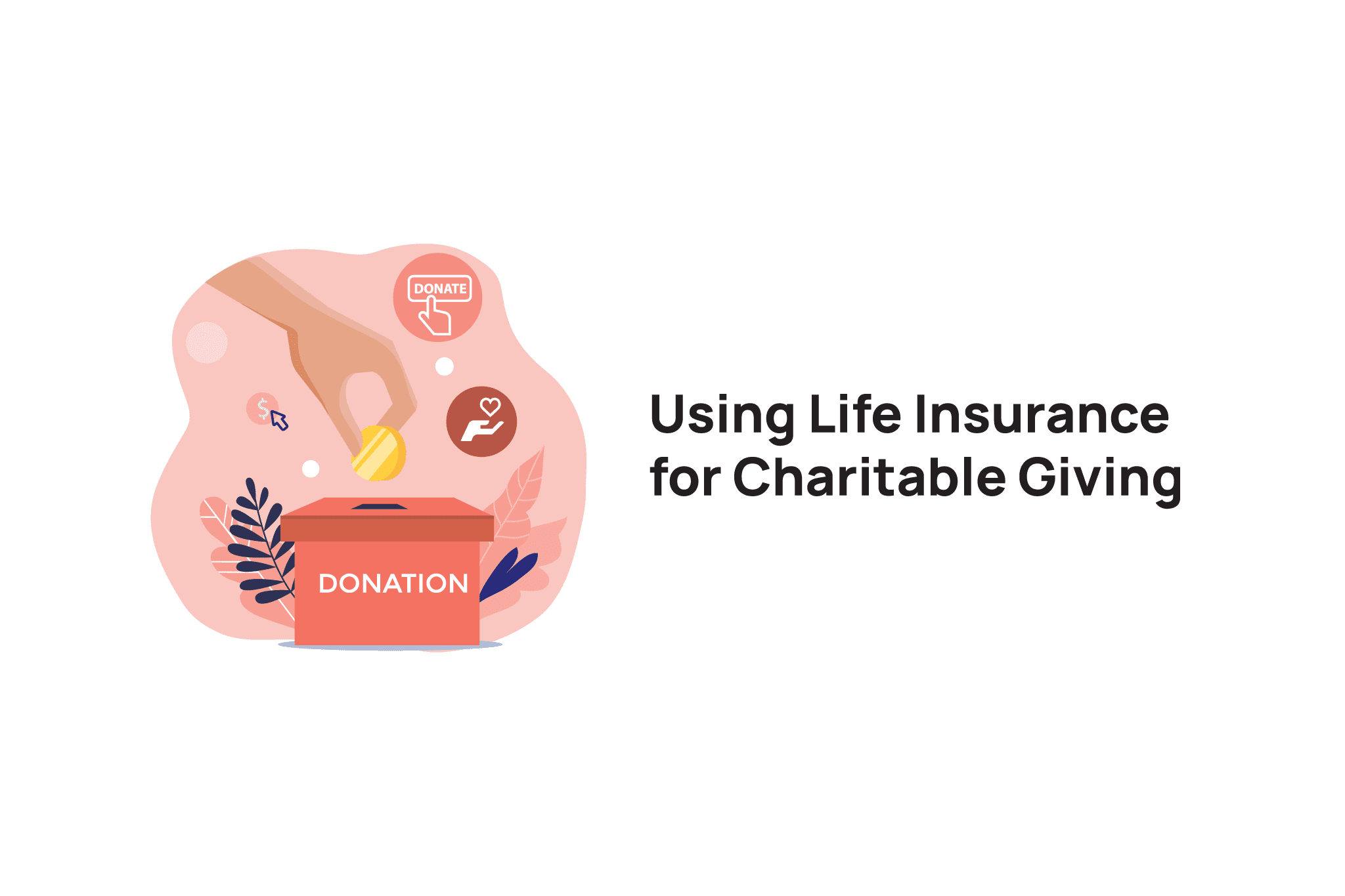In a seemingly endless list of things that were forever changed during the restrictions put in place while the world dealt with COVID-19, you can include charities on the list. Many charities have been hit with a double whammy. There has been a decline in the amount of donations, and there is an expected increase in the demand for services that these charities provide. Canadians are particularly worried right now about the toll that inflation will have on their financial well-being, which is demonstrated by the fact that fewer people plan to make charitable donations this year. Take, for example, the Toronto Daily Bread Food Bank. Prior to the pandemic, their CEO reports that they serviced about 55,000 clients a month. That number is around 130,000 clients currently. The problem is that while the demand has increased, donations have not kept up. Using your life insurance for charitable giving is a viable option, if you google it, you will see numerous organizations offering detailed instructions on how to donate your life insurance policy to them. Let’s have a look at how you can do this and why it might make sense for you to do it.

In This Article:
- How Can I Use Life Insurance to Support a Charity?
- Tax Considerations When Donating a Life Insurance Policy
- Big Advantages of Terminal Tax Returns
- Bottom Line is Big Advantages for Charities You Care About
How Can I Use Life Insurance for Charitable Giving?
You may or may not have ever heard of planned giving. This is a concept that covers many strategies that all end up benefiting charities that you would like to support. One of the areas that is a focus of planned giving strategies is using life insurance policies as a tool to support charities. The gift of a life insurance policy to a charity can profoundly affect their operations, and understanding how to do this properly can provide you with tax relief for the donation as well. You need to make a few considerations when looking at this type of donation. From the perspective of Revenue Canada, they like to see things like an established history of charitable donations over many years, that there is some sort of connection between the donor and the charity (i.e. volunteering or working with them), or that the donor or a close family member was a recipient of services from the charity in the past. All these things allow for the donation to be viewed as a legitimate attempt to support the charity and support the tax relief that goes along with it. Once it has been established that the gift is a legitimate charitable donation, you can then consider the tax relief that can come from the donation.
Get a free quote
Tax Considerations When Donating a Life Insurance Policy
When looking at the tax treatment of donating a life insurance policy to a charity, an important thing affects the outcome. That distinction is based on whether you are donating a policy that already exists or are you buying a new policy to donate to the charity.
For a policy that already exists, there are multiple ways to donate:
- You can name the charity as the beneficiary of the policy. If you do this, at the time of your death, the charity receives the policy’s proceeds, and your estate receives a tax credit for a charitable donation equal to the death benefit amount.
- You can transfer the ownership of the existing policy to the charity. When the ownership transfer is made, you will receive a donation receipt for the current cash value or fair market value of the policy (this depends on how long you’ve owned the policy and what its intended use was). If premiums are still owed on the policy, you would need to continue paying these, but every year, these payments also generate a tax receipt as a donation to the charity. This type of donation can become complicated by one factor. If the cash value exceeds the adjusted cost basis of the policy, you will trigger a taxable gain for yourself for the amount of the difference between the two numbers. This shouldn’t be too large of an issue; remember that the tax receipt is for the full cash value, though your deduction should offset any taxable income created.
- You could also name your estate as the beneficiary; then, you could bequest funds for the charity via your will. This is the least preferred method, though, as naming your estate as the beneficiary of your life insurance eliminates the probate bypass and creditor protection that a named beneficiary carries with it.
If you decide to purchase a new policy in the name of the charity:
- Every year, you receive a donation credit for the premiums you pay. There is no receipt for a donation at your death, though.
- You can consider the use of an insured annuity for charitable giving. This is where you purchase an annuity and use the payments from the annuity to fund the premiums for a life insurance policy. This is a way to ensure that the policy remains funded annually.
Big Advantages of Terminal Tax Returns
In order to understand how charitable donations work, you need to understand the tax treatment of donations. There is a difference between what is tax deductible in the years you are alive and on terminal tax returns. In the years when you are alive, you can claim eligible gift amounts up to 75% of your net income, which is then run through calculators based on what province you live in to figure out what the tax credit that the donation generates is. You need to remember that these tax credits are non-refundable, meaning that you can only reduce the tax you owe to zero; you can’t force negative numbers that generate tax refunds. Donation of a life insurance policy falls under the category of a designated donation, which is deemed to have been made by your estate. The advantage of this type of donation on your terminal tax return is that it can equal 100% of the deceased taxpayer’s income. If there are donations that exceed 100% of income, then you can carry those back a year, again up to a maximum of 100% of the taxpayer’s income. With this amount being deductible, you can see that there can be big advantages to your terminal tax return by making the donation of a life insurance death benefit to a charity.

Bottom Line is Big Advantages for Charities You Care About
Even after you’ve learned about all the advantages of your tax returns for donating a life insurance policy to a charity, tax planning is unlikely to motivate this type of donation. Instead, we see that this is a wonderful way for people who have an established relationship with a charity they have supported for many years to bequeath a large amount of cash to the charity when they pass away. The tax advantage is a nice additional benefit, but it isn’t why people make this type of donation. The charities you care about stand to receive a large infusion of cash upon your passing when you make them the beneficiary of an insurance policy.
Planned giving is a powerful tool that can help charities close the gap between demand for their services and the amount of money that they have available to help their clients. If there is a cause that you would like to support and you have an insurance policy that you are considering different options with (cancelling it, surrendering it, etc.), you can schedule a call with one of our life insurance specialist and we can walk you through it. Whether it is a donation of a policy while you’re alive or having the money paid out after you pass away, if you plan it properly, this is a win-win situation for both you and the charities you love to support.




